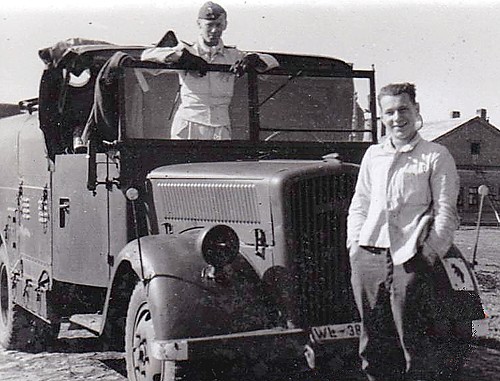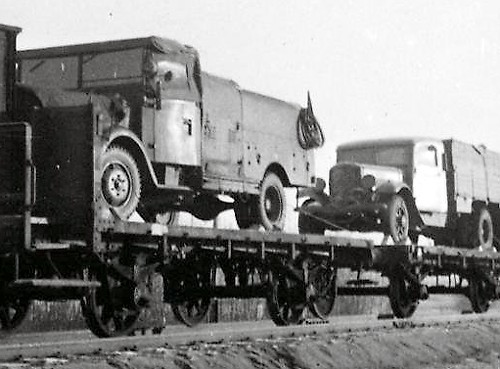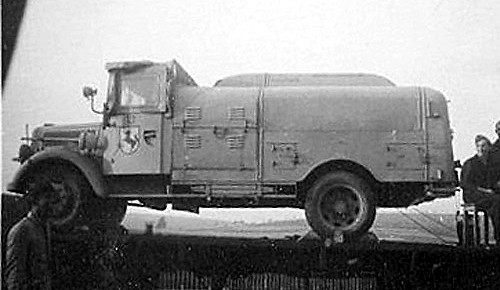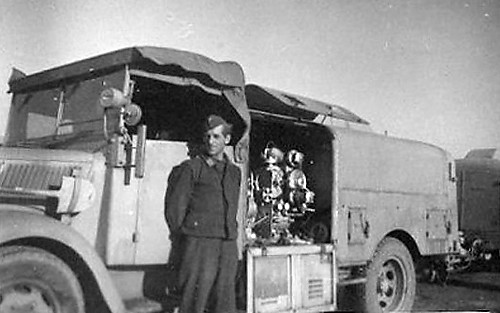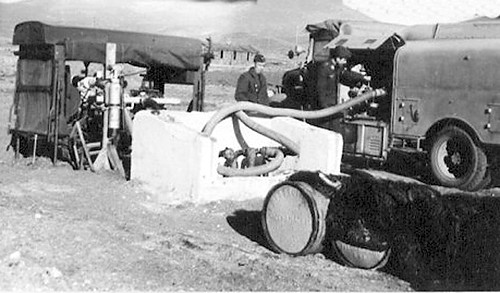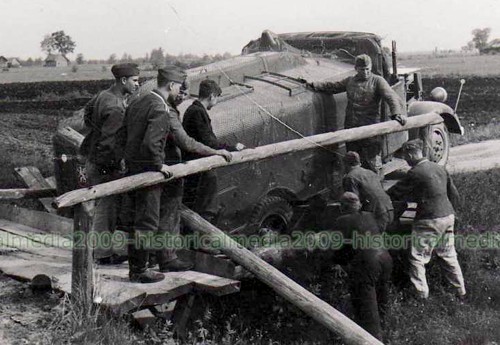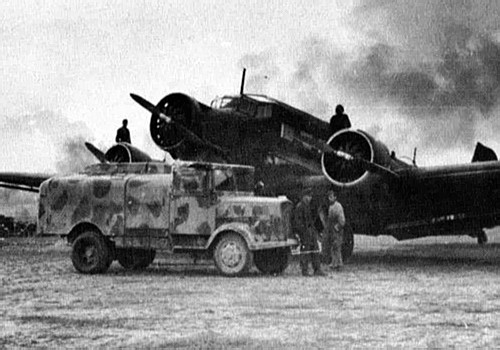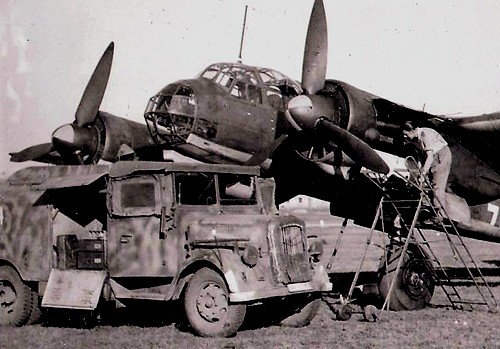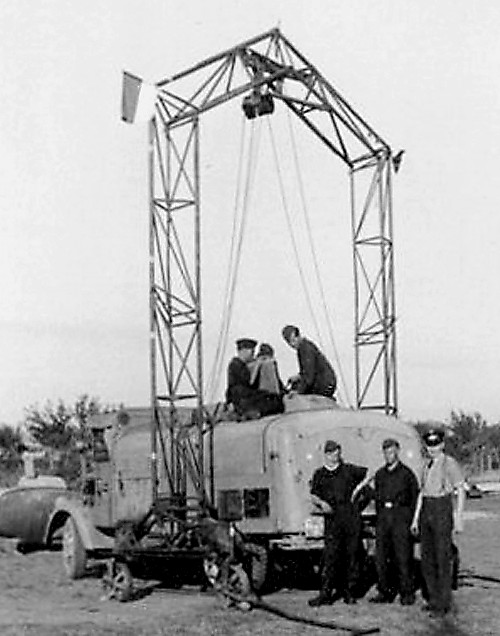The V-2 missiles were launched from scattered sites to avoid Allied air attacks. The V-2 launch group had to be highly mobile and capable of orr-road movement. The specialized support vehicles and efficient supply methods of the V-2 contributed greatly to the successful operational record compiled by German rocket troops. The firing of up to 8-12 missiles per day by some batteries showed the ruggedness and ingenuity of these vehicles. Some vehicles were adapted from existing Wehrmacht equipment and proved quite compatible.
The V-2 rockets used a multi-component fuel. The main engine worked on a mixture of A-Stoff (liquid oxygen), and B-Stoff (75% Alcohol).
The B-Stoff Fuel tanker, based on the well-proven Opel-Blitz 3t chassis, was originally designed as an airfield refueler for Luftwaffe, and received the designation Kfz.385, but became a standard V-2 troop vehicle.
Unlike the T-Stoff tanker, based on the same chassis (LW35019), the B-Stoff tanker was simply constructed, with a wooden cabin, and needed a towed trailer pump.

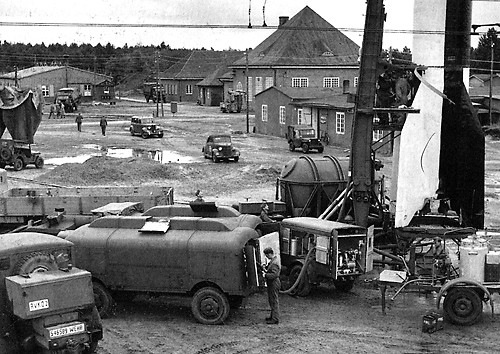
The Kfz.385 on the V-2 launching site.
